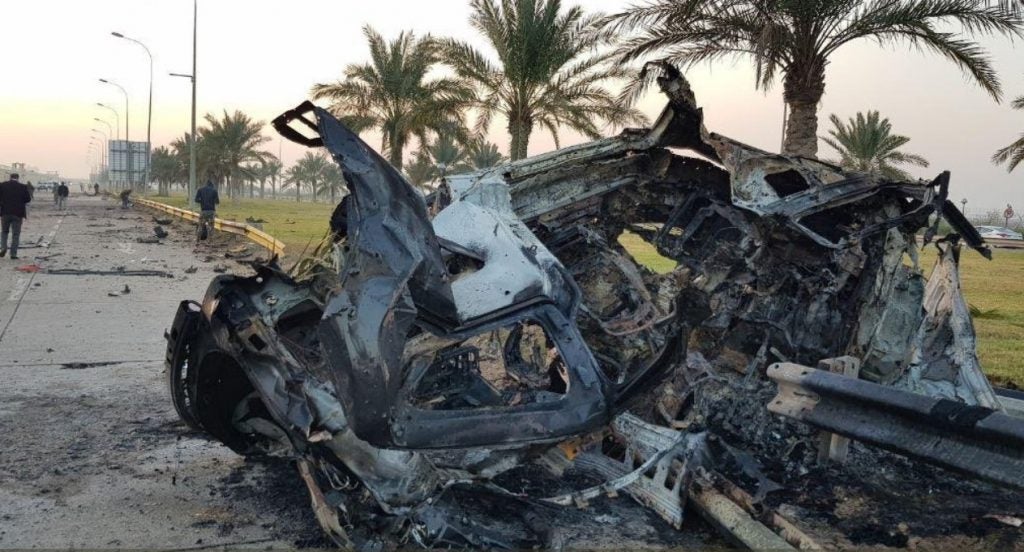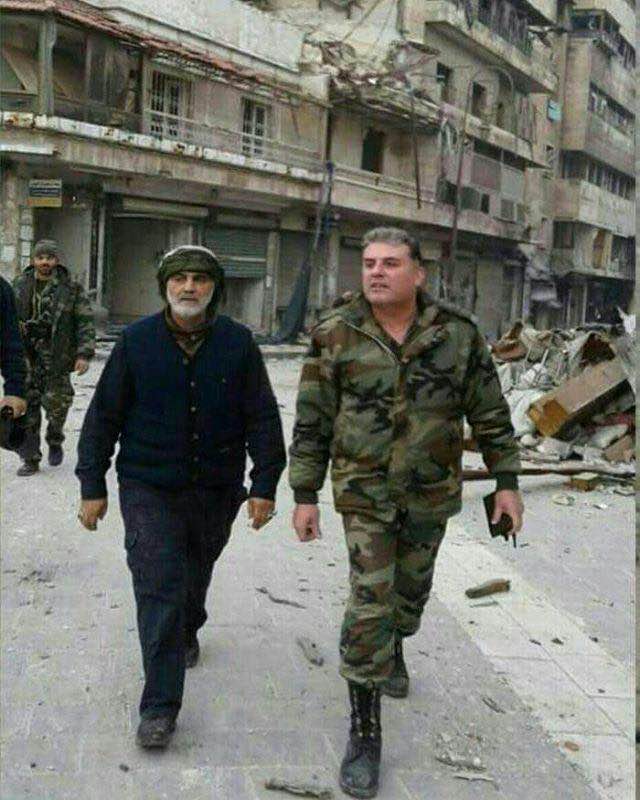Qasem Soleimani Killed In American Airstrike
On the night of 2 January, General Qasem Soleimani, commander of the Iranian Quds Force (a unit within Iran’s Revolutionary Guard Corps (IRGC) which specialises in unconventional warfare outside of Iran’s borders), was killed in an American airstrike on his convoy outside Baghdad International Airport. His death was confirmed by both the Pentagon and the Iranian Islamic Revolutionary Guard Corps.
The Pentagon released a statement shortly after the airstrike, describing the strike as a “decisive defensive action”. According to the statement, General Soleimani was actively developing plans to attack American diplomats and service members in Iraq and throughout the region. The statement added that he had orchestrated the Kata’ib Hezbollah rocket attack on the K1 military base in Kirkuk that killed a US contractor and wounded American and Iraqi security forces personnel, as well as an attempted attack on the US Embassy in Baghdad by Popular Mobilisation Units (PMU) militiamen following an airstrike by the US Air Force in response to the rocket attack.
What Happened
According to sources in the Pentagon, the airstrike was carried out using an MQ-9 Reaper. The IRGC, however, claimed that the airstrike was carried out by attack helicopters.
The IRGC released a list of personnel also killed in the airstrike, namely Brigadier General Hossein Jafarinia, Colonel Shahroud Muzaffari Niya, Major Hadi Tarmi and Captain Waheed Zamanian. Iraqi sources have confirmed the death of Abu Mahdi al-Mahanis, the leader of Kata’ib Hezbollah, and Muhammad Reda al-Jabery, airport protocol officer for the PMU.

Photographs from the site of the airstrike suggest that Soleimani and his entourage were travelling in a convoy of two SUVs which were completely destroyed by the attack. The group’s choice of such transport suggests that they believed that they were at no risk despite the rise in tensions following the embassy attack, a belief that proved to be a fatal mistake.
It is not currently known why Soleimani and his entourage were in Baghdad, although senior IRGC officials have travelled to Iraq many times following the beginning of anti-government protests in October 2019. The anti-government protests have singled out Iran for backing Iraq’s current ruling class, which the protesters accuse of looting the country and allowing disorder to reign. Soleimani was the architect of the brutal PMU-led crackdown on the protesters, which saw use of live fire and kidnappings of protesters. Some sources in the Iraqi government, however, claim that the airstrike was carried out following intelligence that Soleimani intended to personally oversee a coup against the Iraqi government. The coup would have seen the removal of members of the Iraqi government deemed to be pro-Western by Iran.

Soleimani had been in charge of Quds Force operations since 1998, a position in which he answered only to the chief of the IRGC and the Supreme Leader of Iran. In his time as head of Quds Force, he oversaw the support of al-Qaeda, support of Iraqi Shia insurgent cells in the 2003-2011 insurgency, negotiated Russia’s entry into the Syrian Civil War, the destruction of Aleppo and Eastern Ghouta, starvation sieges of opposition-held areas in Syria, demographic re-engineering of formerly opposition-held areas in Syria and former ISIS territory in Iraq, the arming of the Houthi militias in Yemen, mining of shipping in the Strait of Hormuz, the cruise missile attack on the Saudi Aramco refineries in Aquaiq and Khurais and the downing of a US Navy RQ-4N Orion as well as the brutal suppression of protests in Iran.
Reaction To the Strike
The death of Soleimani elicited a strong response from the government of Iran, with the General Staff of the Armed Forces of Iran promising “severe revenge” in response to the attacks. A three day mourning period has been declared in Iran following the confirmation of Soleimani’s death. Brigadier General Esmail Ghaani has been appointed as Soleimani’s successor as Quds Force commander
The Iraqi government condemned the attack as well, with outgoing Prime Minister Adil Abdul-Mahdi describing the killing of Abu Mahdi al-Mahanis as “aggression on Iraq as a state, government and people”. Muqtada al-Sadr, leader of the Sadrist movement, has also announced the reformation of the Mahdi Army to “defend Iraq”.
The reaction from Russia, another external power active in the region, has been relatively muted with Russian Foreign Minister Sergey Lavrov describing the strike as a violation of international law. The Russian Foreign ministry reportedly said:
“that this step by the US is fraught with serious consequences for peace and security in the region and that it does not aid the efforts on finding solutions to difficult issues accumulated in the Middle East. On the contrary, it leads to a new wave of escalation. Moscow urges Washington to abandon unlawful forceful tactics of achieving its goals on the international arena and to resolve any issues at the negotiating table.”
Opinions on the street, however, are markedly different, with anti-Iran protesters throughout the Middle East celebrating the news of Soleimani’s death, with some baking sweets to celebrate the demise of the man who orchestrated the death or exile of many of their loved ones.
Soleimani’s death marks a massive shift in US policy towards the region. The Iranian regime had engaged in a series of steadily escalating attacks, aiming to slowly push against the US’ “red line”. While the IRGC has vowed retaliation, the abrupt decapitation of both Quds Force and Kata’ib Hezbollah’s leaders in response to the crossing of ‘the line’ has dramatically changed the nature of the retaliation Iran and its proxy forces face for attacks on US personnel, potentially driving them towards attacking institutions and individuals deemed to be pro-US instead. The US government has already issued an advisory for all US citizens in Iraq to leave the country by any means possible. In a press conference on Friday afternoon President Trump described Soleimani as “the number one terrorist anywhere in the world” continuing that the US acted “to stop a war, we did not take action to start a war.”
Qasem Soleimani sought to make himself the icon of Iran’s expansionary ambitions in the Middle East, efforts assisted by myth-making from those fighting him. Now, the downside of such an approach has finally caught up to him. It remains to be seen what short and long-term impacts Soleimani’s death will have on Iran and the wider region and whether the situation will continue to escalate as Iran weighs its options for retaliation.

